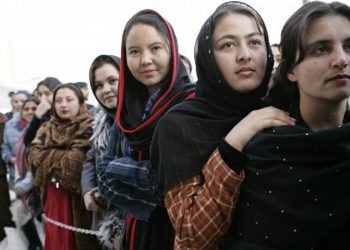Human Lives Human Rights: A new school of Islam from Saudi Arabia is transforming South Asia’s religious landscape. Wahhabism, a fundamental Sunni school of Islam originating in Saudi Arabia, entered South Asia in the late 1970s. With public and private Saudi funding, Wahhabism has steadily gained influence among Muslim communities throughout the region. As a result, the nature of South Asian Islam has significantly changed in the last three decades. The result has been an increase in Islamist violence in Pakistan, Indian Kashmir, and Bangladesh. While governments in South Asia have not initially made the connection between Saudi Arabian money and the radicalization of Islam in their own countries, it is now clear that Wahhabism’s spread is increasing fundamentalism in South Asia. As a result, there has been an increase in Islamist violence in Pakistan, Indian Kashmir, and Bangladesh. While governments in South Asia have not initially made the connection between Saudi Arabian money and the radicalization of Islam in their own countries, it is now clear that Wahhabism’s spread is increasing fundamentalism in South Asia.
Islam in South Asia has traditionally been distinct from Middle Eastern Islam. Sufism –mystical Islam – as well as elements of syncretism with Hinduism and other native religions characterize South Asian Islam. Muslim rulers throughout South Asia in the medieval period were often isolated from the rest of the Muslim world and relied upon a large number of non-Muslim subjects. Consequently, South Asian Islam incorporated customs mainstream Islam frowns upon, such as visiting the shrines and graves of holy men, meditative practices influenced by yoga, and the use of music for worship.
Due to the influence of Wahhabism from Saudi Arabia, South Asian Islam began to change as private individuals and the Saudi government poured money into South Asian mosques and madrassas. As a result, many South Asians are now Wahhabis or members of related sects that practice a form of austere Islam similar to the type found in Saudi Arabia. One of these sects is a conservative movement known as the Deobandi movement, which, while indigenous to South Asia, is influenced by Wahhabism. The great rivals of the Deobandis in South Asia are adherents of the Barelvi movement, which was formed in reaction to the Deobandis and seeks to preserve the Islamic practices of South Asia, especially pilgrimages to graves and shrines.
Saudi influence entered Pakistan during the Soviet invasion of Afghanistan and the subsequent war in the 1980s, in the form of funds for madrassas and mosques in Pakistan, in order to create and train mujahedeen to fight atheistic Soviet Communism.
Saudi Arabia’s government money funded both Deobandi and Wahhabi madrassas throughout Pakistan, and Saudi charities also poured money into Pakistan with the blessing of the Saudi government. Initially, the mushrooming of Wahhabi and Deobandi groups worked to produce mujahedeen to fight in the war against the Soviets in Afghanistan.
Later, elements of the Pakistani government, notably the Pakistani intelligence agency, the Inter-Services Intelligence (ISI), saw the spread of Wahhabism as useful in creating jihadist proxies to influence Afghanistan and Indian Kashmir.
As a result, despite the end of the Soviet-Afghan war in 1989, the influence of Wahhabism continued to grow in Pakistan. Additionally, due to the poor nature of Pakistan’s education system, Saudi-funded madrassas educated many of the most impoverished who would have otherwise not had a chance to go to school.
Today, Saudi money continues to fund Wahhabi and Deobandi groups that promote their ideology in Pakistan with the tacit approval of the Pakistani government. The success of Saudi money in converting Muslim groups to Wahhabism has since been replicated in other parts of South Asia, including parts of India and Bangladesh.
In the Indian state of Jammu and Kashmir, Saudi influence has led to 1.5 million people, from a population of 8 million, to affiliate with Wahhabi mosques. A Saudi-funded group, Jamiat Ahl-e-Hadith claims 16 percent of Kashmir’s population as its members and has built 700 mosques and 150 schools. Police in Jammu and Kashmir believe this is the result of a $35 billion plan approved by Saudi Arabia’s government in 2005 to build mosques and madrassas in South Asia. Additionally, Saudi Arabia distributed free religious literature and provided stipends to Wahhabi preachers.
In Bangladesh, individuals radicalized in Wahhabi-funded mosques have coalesced under the fundamentalist organization Hefazat-e-Islam, which was implicated in the January 2014 incident when its members took to the streets in violent protests and demanded the implementation of Islamic law in Bangladesh.
Saudi Arabia has several motivations in spreading Wahhabism throughout South Asia. The first is a genuine zeal for spreading the movement’s teachings. It has been the policy of the Wahhabi movement to evangelize from its inception, and Saudi oil money gives it the means to do so. Saudi Arabia’s initial success in Pakistan showed Saudi Arabia that South Asia, with its relatively weak governments and lack of regulation on foreign money, is fertile ground for the spread of Wahhabi influence. Additionally, Saudi Arabia noticed the ease with which Wahhabis formed strong bonds with the region’s native Deobandis. Another reason Saudi Arabia is spreading Wahhabism in South Asia is to counter the influence of Shia Iran. Since the Iranian Revolution of 1979 created an expressively Shia state, Saudi Arabia has promoted Wahhabism wherever it could in order to fight Shia Islam. This includes South Asia, where Saudi Arabia wants to counter Iran’s tendency to use Shias groups in Pakistan and Afghanistan to expand its political influence in those countries.
Unless governments throughout South Asia take steps to limit the influence of Saudi money and encourage alternative sources of funding for mosques and madrassas, Saudi-funded Wahhabi influence will continue to spread throughout South Asia, radicalizing its Muslims, and hampering efforts by South Asian governments to fight radical Islam and promote modernization.


















